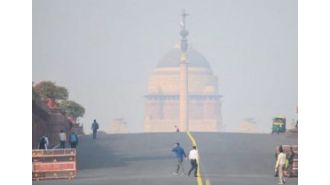Community linked Biodiversity Conservation, Sacred Groves of Kodagu, Karnataka, India
Indigenous communities in many parts of the world have protected forests and worshiped local deities to protect them from different calamities. These forest patches are sacred forests or groves based on spiritual and cultural values. Kodagu district in Karnataka, India has over 1,214 sacred groves locally called as Devarakadu and is located in the Western Ghats – a Biodiversity hotspot. These groves are unique and rich in biodiversity and every village has at least one sacred grove. Today, due to changes in the forest structure, religious beliefs, and perception towards the groves, sacred groves face many threats. Realizing the importance of community participation and a more holistic view towards the protection of ten selected grove in Kodagu, the Forest Department in collaboration with Centre for Environment Education (CEE), Forestry College, and Kodagu Model Forest Trust initiated a project “Conservation Education Programme for Sacred Grovesâ€.
A Scientific inventory of flora and fauna along with history, belief and myths of 10 selected groves in Kodagu are documented and published. Oriented teachers, students and youths residing around the groves experienced and realized the importance of sacred groves.
Posters and wayside informative panels helped to spread the message of protecting the sacred grove’s, among the community. Trail paths, signages created inside the groves will enable tourists to enrich their experiences. The sensitized students compiled interesting stories and facts from their grand-parents and parents about their nearby groves. This initiative helps the forest department to draw effective grove management plan, to mitigate the loss of biodiversity and manage forest sustainably and thereby addressing SDG Goal 15.
Sacred forests, often referred to as sacred groves, are sites that have cultural and religious beliefs. Since time immemorial indigenous communities all over the world have always worshiped nature and inherited from their ancestors. These patches or sections of a forest were believed to have spiritual beings residing there, and where everyday activities such as tree felling, gathering of wood, plants and leaves, hunting, fishing, grazing of domestic animals, lowing or harvesting of crops, and building ordinary dwellings were prohibited (Hughes and Swan 1986). Sacred groves are distributed across many countries extending from Asia, Africa, Europe and America, but the present occurrence is mostly restricted in Africa and Asia. In India, sacred groves are recorded from North east Himalayan region, Western Ghats, Eastern Ghats, Coastal region; Central Indian Plateau and Western desert (Rajasri Ray et al., 2014). A diverse range of ecosystems is preserved in these groves along with traditions, regional and local identities as represented in name, practices and management of groves.
Sacred groves of India have Pre-Vedic origin. This age old tradition is still prevalent today and plays a vital role in the conservation of resources. They not only have cultural and spiritual value, but also act as reservoirs of the local diversity preserving unique flora and fauna. The level of disturbance varies across many sacred groves and from their proximity to villages. These groves also act as corridors and can reduce human wildlife interaction. The groves play an important role in water and soil conservation as well.
The earliest documentation in India on sacred groves is that of Brandis (1897), the first Inspector General of Forest. His observation on scared groves is more of a travelogue. The Scared Groves are known locally by many names in each state across India. In Kodagu, located in Karnataka, India the sacred groves are known as “Devarakadu†(God’s forest). Kodagu district in Karnataka has 1214 sacred groves covering an area of 2250 (ha) with every village in Kodagu having at least one devarakadu or more than one in some cases (Kushalappa and Kushalappa, 1996). In terms of density there is one Devarakadu for every 300 acres, possibly the highest in the world.
The uniqueness of the grove is that each devarakadu has its own traditions and culture showcasing the cultural diversity. According to a study done, Kodagu can be regarded as a ‘Hotspot†of sacred grove tradition in the world (Kushalappa and Bhagwat, 2001.) All communities come together, offer their prayers and participate in the annual activities. This community participation symbolizes unity and harmony. Today, the sacred groves face many threats such as change in religious beliefs, forest structure, landscape and attitudes towards the groves. Hence, it is vital to motivate and include the community in preserving the sacred groves as common property resources (Kushalappa and S. Raghavendra, 2012).
In Kodagu the sacred groves are declared as Protected Forests and owned by the Forest Department. The groves are managed by the local communities. Incorporating the groves into conservation networks could help in the effectiveness of protected areas by covering a wider variety of habitats and by harnessing the support of local people. (Shonil A. Bhagwat, 1996).
(Source: This is an abstract taken from the 'My forest' Journal; March - June 2017. The authors are Santosh R. Sutar, Natasha Ballal, Dr. P. Shankar (IFS), K.S. Pooja and K.S. Manjunath. You can read the entire article at aranya.gov.in)
134 Views






